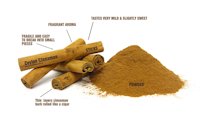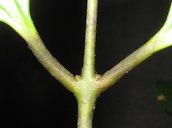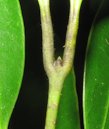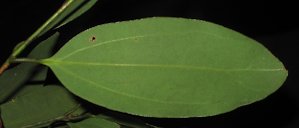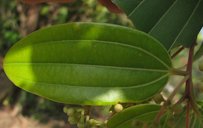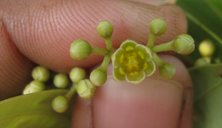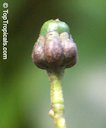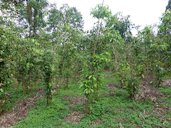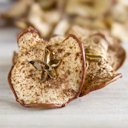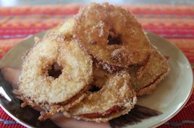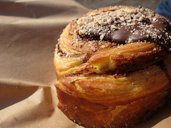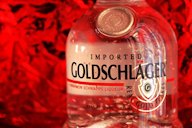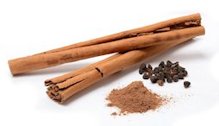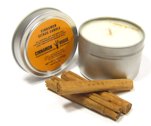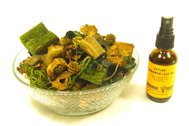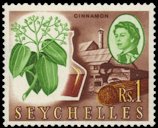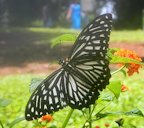
| Cinnamon, Ceylon - Cinnamomum verum | |||||||||||||||||||||||||||||||||||||||||||||||||||||||
|---|---|---|---|---|---|---|---|---|---|---|---|---|---|---|---|---|---|---|---|---|---|---|---|---|---|---|---|---|---|---|---|---|---|---|---|---|---|---|---|---|---|---|---|---|---|---|---|---|---|---|---|---|---|---|---|
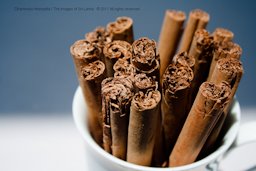 Fig. 1  Ceylon cinnamon, Cinnamomum verum, Sri Lanka 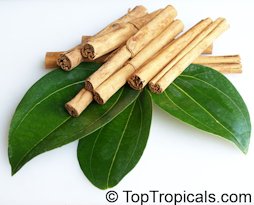 Fig. 2  C. zeylanicum, C. verum 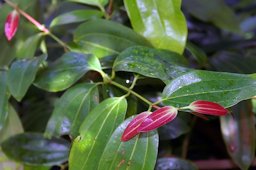 Fig. 4  C. verum, äkta Kanel, (As C Zeylanicum, Taiwan), United States Botanic Garden 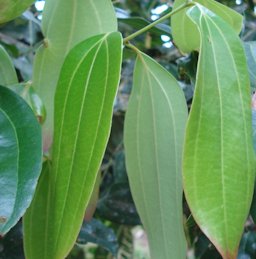 Fig. 5   Fig. 6  Jardín Botánico del Bosque de Chapultepec, México D.F. 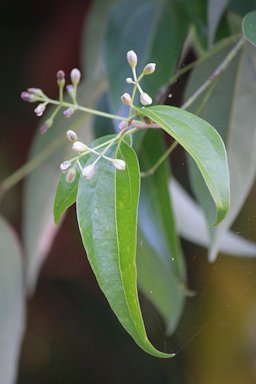 Fig. 13  Cinnamon (C. verum) flowers and foliage, Manado, North Sulawesi 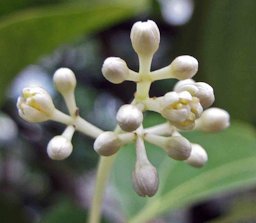 Fig. 14  Ceylon cinnamon, Hong kong park 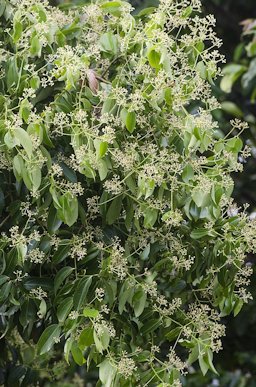 Fig. 15  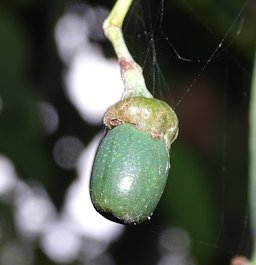 Fig. 17  C. verum, Cinnamon, Ezhupunna, Kerala, India 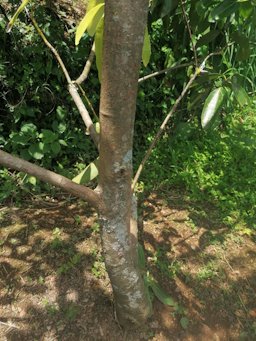 Fig. 20  Ceylon cinnamon, C. verum, San Pedro Necta, Guatemala  Fig. 21  Ceylon cinnamon growing at the Kisantu Botanic Garden, Democratic Republic of the Congo (formerly Zaire) 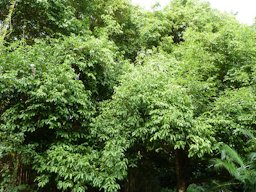 Fig. 22  C. verum, cinnamon, at Ho'omaluhia Botanical Garden in Kaneohe, HI 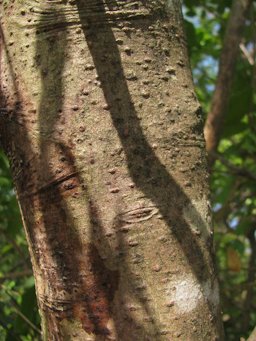 Fig. 23  C. verum, Sakleshpur, India  Fig. 27  Cinnamon farmers peeling the bark off the branch in Sri Lanka 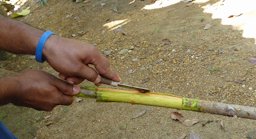 Fig. 28  Sri Lanka (Southern Province): décorticage de la cannelle (removal of the bark) 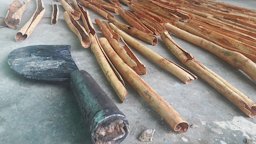 Fig. 29  Ceylon cinnamon peels with cutting Knife 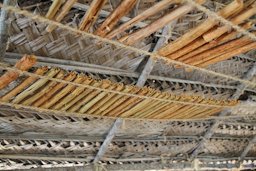 Fig. 30  Cinnamon quills drying, Sri Lanka 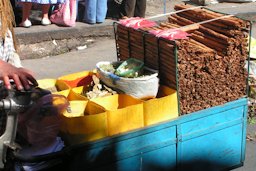 Fig. 31  C. verum (cinnamon) in markets in La Paz, Bolivia 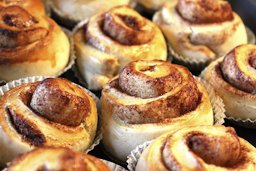 Fig. 32  Cinnamon rolls 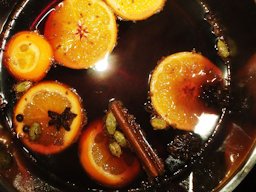 Fig. 33  Mulled wine with spices and slices of orange 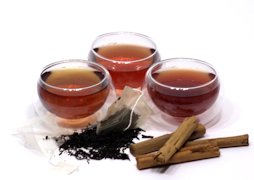 Fig.34  Ceylon cinnamon tea 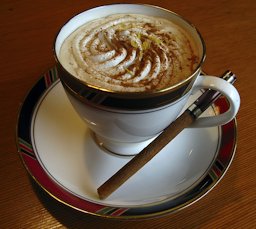 Fig. 35  A cup of cappuccino with a cinnamon stick  Fig. 49  Scatola cilindrica in latta di colore bruno con raffigurazione della ditta Bertolini di Torino 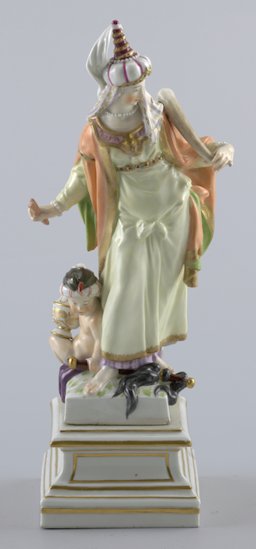 Fig. 50  "Asia" standing female figure, wearing turban and holding pieces of cinnamon and an elephant tusk; attended by seated, turbaned putto, holding censer and horse-tail sceptre; square pedestal |
Scientific
name Cinnamomum verum J.Presl. Prononciation sin-uh-MOH-mum VAIR-um 18 Common names English: cinnamon, Ceylon cinnamon, cinnamon tree; Arab: dâr sînî; Cambodia: che'k tum phka loëng; Dutch: kaneelboom; Finnish: aitokaneli, ceyloninkaneli, kaneli; French: cannelier de Ceylan; German: Ceylonzimt, Ceylonzimtbaum, echter Ceylonzimt, Zimtbaum; Hindi: दालचीनी [dalchini]; India: cannalavangapattai, ilayangam, kurundu; Indonesia: kayu manis; Italian: cannella del Ceylano; Java: kaju manis, manis djangan; Malaysia: kayu manis; Papua New Guinea: skin diwai; Philippines: cinnamon, kanela; Portuguese: caneleiro, canelleira da India; Portuguese (Brazil): canela-da-Índia; Spanish: canela, canelero de Ceilán; Sri Lanka: curruva-pattai; Swedish: äkta kanel; Vietnam: qu[ees] h[oof]i, qu[ees] r[af]nh, qu[ees] Srilanca; Transcribed Chinese: xi lan rou gui 2,3,17 Synonyms Camphorina cinnamomum (L.) Farw., C cinnamomum (L.) H.Karst., C. zeylanicum Blume, Laurus cinnamifera Stokes, Persea cinnamomum Spreng. 1 Complete list of synonyms Relatives Camphor (C. camphora), Saigon cinnamon, Vietnamese cassia (C. loureiroi), Indonesian cinnamon (C. burmanni), Cassia cinnamon or Chinese cinnamon (C. aromaticum) Family Lauraceae (laurel family) Origin Sri Lanka and Malabar Coast of India USDA hardiness zones 10-12 5,18 Uses Flavoring; food additives; essential oils; folklore medecines 2 Height Usually 32 ft (10 m); up to 52 ft (18 m) 3,16 Spread 32 ft (10 m) 16 Plant habit Normally a single central stem; numerous, often drooping, branches beginning low on the trunk 3 Growth rate Slow growing 16 Longevity Under cultivation 15-45 years 3 Trunk/bark/branches Bark about 0.4 in. (10 mm) thick; strongly aromatic; branches and stems rough, dark brown or brownish-grey 3 Pruning requirement Under conditions of cultivation, the continual removal of shoots by cropping almost to ground level results in the formation of a dense bush with a number of leafy coppiced shoots of height 6.5-8 ft (2-2.5 m) 15 Leaves Evergreen; opposite; somewhat variable in form and size; stiff; strongly aromatic; shiny dark green 3 Flowers Small; 0.1 in. (3 mm) in diameter; foetid smell; pale yellow; borne in lax axillary and terminal panicles on the ends of twigs 3,14 Fruit 1-seeded drupe; ellipsoidal to ovoid; 0.4-0.8 in. (1-2 cm) long; black when ripe; surrounded by the enlarged perianth at the base 3 Season Sri Lanka May-June and Oct.-Nov. Light requirement Semi-shade (light woodland) or no shade 16 Soil tolerances Tolerant of a wide range of soils; the best cinnamon grows in fine white quartz sand or in lateritic gravelly soil; rocky and stony ground is unsuitable 4,15 PH preference Mildly acid and neutral soils; can grow in very acid soils; 5.5-6.5, tolerating 5-7 16 Drought tolerance Prolonged spells of dry weather are not conductive for successful growth 13 Aerosol salt tolerance Susceptible to salinity 3 Soil salt tolerance Susceptible to salinity 3 Plant spacing Commercial plantations in Sri Lanka: 10x10 ft (3x3 m) 13 Roots Tap root; moderately deep and extensive roots 3 Invasive potential * None reported Pest resistance Affected by some insects Known hazard Cassia cinnamon (C. aromaticum) contains a chemical called coumarin, which can be harmful to the liver 11 Reading Material Cinnamomum verum, PROSEA Foundations Cinnanomum verum, Agroforestry Database The etymology of cinnamon is derived from the Greek word kinnamómon™ (meaning spice). The Greeks borrowed the word from the Phoenicians, indicating trade with the East from early times. Cinnamon is recorded in Sanskrit, the Old Testament, and in Greek medicinal works and was employed by the Egyptians for embalming purposes as early as 1485 BC. 4 A species synonym, ‘zeylanicum’, refers to the place of origin, the island of Ceylon (Sri Lanka). 14 The word cinnamon can legally be applied to both true cinnamon and cassia in the U.S., while in the U.K. and other countries cassia must be labeled "cassia" and cannot be labeled simply as "cinnamon". 10 Origin C. verum has been known in southern Europe for well over a thousand years, but it became more widely known in other parts of Europe during the Middle Ages when the Islamic world extended its influence to the Orient and east to Iberia starting in the 8th century AD. Cinnamon and other aromatic plants were used to produce comfit boxes in Europe during the 15th century. Comfit was a home remedy kit composed of about a dozen different pastilles made from sugar, honey, saffron and spices. While Arabs dominated the trade in cinnamon and many other spices in the Middle Ages, several kingdoms in Europe aspired to wrest control of the lucrative trade in spices. Sri Lanka was a coveted prize because of its extensive wild stands of premium cinnamon, and the Portuguese took control of cinnamon production on the island by 1536. The Portuguese held onto it for a century until they were dislodged by the Dutch, who were in turn ousted by the British in 1796. In 1770, while Sri Lanka was under Dutch control, cinnamon was 1st intensively cultivated on the island. They also started plantations on Java in 1825; cinnamon has thus been truly domesticated only since the 18th century. 4 True cinnamon, Cinnamomum verum which originates from Sri Lanka and Southern India has been introduced to many other areas, notably Madagascar and the Seychelles. 6 Description Cinnamomum verum was previously known as C. zeylanicum, meaning from Ceylon. Like many of its huge clan, this species is a most handsome tree, with a widely spreading dense crown and sturdy erect trunk that has smooth, papery, spicily pungent bark. 5 In traditional cultivation, C. verum was grown as a bush, with seeds sown directly in a circle of about 4 ft (1.3 m) in diameter. As the saplings developed (up to two years), they were cut close to the ground after the rainy season, when the young bark was easily detached from stems. Saplings resprouted and cultivation continues. Currently, trees are planted in plantations and coppiced every 2 years. After 10 years, rootstocks are removed, split up and replanted. 5 The processed product of cinnamon, that is, quills, which are individually hand-made after peeling off the bark of the stems, is unique to Sri Lanka. The production of quills requires a substantial amount of skills and time, making the process quite expensive. The process also makes mechanization very difficult. 9
Fig. 3. Ceylon cinnamon quills and powder with descriptions How to identify real cinnamon Climate C. verum requires a warm and wet climate with an average temperatures of about 80.6 °F (27 °C) and no extremes of heat or cold Although there can be months in which there is less rain, no prolonged dry season should occur and rain received on about 150 days per year. Waterlogged and marshy areas should be avoided, as they result in an undesirable, bitter product, which is much less aromatic. 4 Leaves Aromatic, leathery and highly lacquered, the dark green leaves have the distinctive 3-5 longitudinal veins (Fig. 5,12) of the genus; they are brilliant red on emerging (Fig. 4,7) but soon deepen to rich, dark green. 5 Leaves of cinnamon also yield oil, main constituent of which is eugenol. The oil possesses strong odour and is used for blending with camphor. 13
Fig. 7. C. verum young leaves at Thattekkadu, India Fig. 8. C. verum, Cinnamon, Ezhupunna, Kerala, India Fig. 12. C. verum, Sakleshpur, India Flowers Expanded panicles of tiny, yellowish white flowers attract bees. 5 The flowers have an unpleasant aroma. 18
Fig. 16. C. verum, Sakleshpur, India Pollination The method of pollination is not known with certainty, but insects probably pollinate the very small bisexual flowers, while birds disperse the fruit berries. 4 Fruit The fleshy, green fruits will mature to dark purple. They form as drupes and will contain one seed. Although they have a cinnamon aroma, they are not used for the production of cinnamon. Fruit is 0.6-0.75 in. (1.5-2 cm) long when ripe, with the enlarged calyx at the base. 14,18 Fruits mature in 6 months. 3,4
Fig. 18,19. C. zeylanicum, C. verum Varieties There are many types of cinnamon. Ceylon cinnamon (Cinnamomum verum), grown primarily in Sri Lanka, is known as “true” cinnamon. Cassia cinnamon (Cinnamomum aromaticum), grown in southeastern Asia, is the most common type sold in North America. 11 Planting In India, pits of 20 in. (50 cm) are dug at a spacing of 10x10 ft (3x3 m). They are filled with compost and topsoil before planting. One-year-seedlings are planted. In each pit, 5 seedlings can be planted (Fig. 25,26). In some cases, the seeds are directly dibbled in pits that are filled with compost and soil. Partial shade in the initial years is advantageous for healthy and rapid growth of plants. 13
Fig. 24. Jeune pousse de cannelier dans la nature Fig. 25,26. Canneliers de Ceylan (C. verum) au Sri Lanka (Province du Sud) Traning and Pruning Training and pruning of plants should be done once in every six months. Excess lateral branches of 12-18 in. (30-45 cm) from the ground are removed to have a straight and smooth stem and after harvesting weak shoots are removed to enhance the growth of main stems. 19 Harvesting First harvest of cinnamon can be taken after three years of planting and two harvests can be taken per year. Harvesting is done when the bark color of the stem turn in to brown and stick diameter is about 1.4-2 in. (3-5 cm) diameter. Branches and leaves are removed from harvested sticks before peeling and harvested stems should be peeled on the same day. 8 Ceylon cinnamon has to be harvested during the wet season because then the cambium is active and the cortex can be easily separated from the wood. The shoots are harvested when they are 6.5-10 ft (2-3 m) tall and 0.5-2 in. (1.2-5.0 cm) in diameter. Shoots in the centre of the clump are cut low down, while those on the outside are cut higher up to ensure that new buds sprout mainly on the outside of the clump. In Sri Lanka harvest peaks are in May-June and October-November. The first harvest is of inferior quality (thick bark), but this improves in later harvests. Best quality cinnamon is obtained from thin bark from the middle part of shoots in the centre of the stool. 3 After harvesting, all unwanted shoots and stumps are cut off the stool, which is then covered with earth, and new shoots are allowed to grow. The number of shoots per stool normally increases to a maximum at 8 years and declines after 10-12 years. A cinnamon plantation can remain profitable for 15-45 years, mainly depending on the standard of management. 3 Peeling Peeling consists of stripping the bark for the preparation of quills from the inner bark. The outer bark is first removed and the stem then rubbed with a brass rod to loosen the inner bark. Two horizontal cuts are made 12 in. (30 cm) apart and two longitudinal slits on opposite sides of the shoot. The inner bark is then separated from the wood. Alternatively, the outer and inner bark are separated from the wood together. The strips are packed together, wrapped and left overnight for slight fermentation, facilitating the subsequent scraping off of the outer bark (epidermis, cork and green cortex). The curled pieces are assembled into compound quills of 3.3 ft (1 m) length by joining the best and longest quills on the outside and smaller pieces inside the longer ones. They are dried in the shade until they are yellowish-brown. 3 Grading The grading of Ceylon cinnamon is rather elaborate compared with the grading of cinnamon from other sources. The various forms and qualities are known as unscraped bark, scraped bark, compound quills, simple quills, quillings (broken pieces of quills), featherings (bark of twigs and twisted shoots) and chips (trimmings, shavings). Quills are further graded according to the thickness of the bark. Grinding usually takes place in the consuming countries. 3 Cinnamon Processing, Practical Action
Propagation Propagation is by seed or by vegetative means. Fruits are much liked by birds and the seed is easily spread, so the fruits have to be bagged for collection. Fruit pulp is allowed to rot before seeds are removed, washed and dried. Seeds quickly lose their viability. Fresh seeds germinate in 20-25 days. They are sown in nurseries or directly in the field. 3 Vegetative propagation is by cuttings, layering or division of old rootstocks. Young cuttings with 2-3 nodes are planted in polybags and placed under polythene cover; they are ready for field planting after 12-18 months. Old rootstocks can be divided. For this, old plants are cut down to within 6 in. (15 cm) of the ground, and suitable parts of the rootstock planted out with adhering soil. Harvesting can start 1-1.5 years after planting out in the field compared with 3 years for seedlings. 3 Pests A large number of insects have been recorded on cinnamon, but they usually represent single records in the early years of the century and none appears to have caused serious widespread damage. 4 Food Uses The major uses of cinnamon, both in whole and ground form, are for domestic culinary purposes and for flavouring processed foods (bakery products, sauces, pickles, puddings, beverages, confectionery). 3 Cinnamon bark oil is used in meat and fast-food seasoning, sauces and pickles, baked goods, confectionery and cola-type drinks. The leaf oil is also used as a flavouring agent for seasonings and savoury snacks. In Mexico, the bark is used to enhance the flavour of coffee. 4
Fig. 36. Apple cinnamon chips Fig. 37. Cinnamon sugar fried apples Fig. 38. Bottles of Kaneláda cinnamon soft drink (traditional Koan food) on sale at the Kos, Greece, International Airport duty free shop Fig. 39. Edholm Point Ice cream: apple cinnamon Fig. 40. Cinnamon danish in Copenhagen Fig. 41. Bottle of Glodschlager, cinnamon schnapps liqueur Fig. 42. Ceylon cinnamon, C. verum Nutrient Content The different varieties and types of cinnamon can slightly vary in nutritional composition. The two main types of the spice, Ceylon, or real cinnamon (Cinnamomum verum) and cassia, or Chinese cinnamon (Cinnamomum cassia), have varying levels of some nutrients possibly because of their different origins. Cinnamon contributes to human health with small amounts of some essential nutrients, such as proteins, carbohydrates, and fatty acids. 12 Medicinal Uses ** Cinnamon bark oil is employed in dental and pharmaceutical preparations. Historically, cinnamon drops were regarded as a tonic, a sedative in childbirth, and a remedy for many common disorders. Cinnamon served as a breath sweetener in the past. In medieval times, cinnamon was distilled to produce cordials, ostensibly to aid in digestion. In the Orient, cinnamon and its near relatives are still widely used for local remedies, particularly for gastrointestinal and respiratory disorders and as an aphrodisiac. In the Philippines and the Pacific, it is taken to relieve headache. In Colombia, cinnamon sticks are chewed to speed parturition. In Ghana, bark of young shoots are used as a carminative and to treat catarrh (coryza), and the bark extract is an intestinal astringent. In Haiti, the essence is used as a poultice for rheumatism and is taken orally for spasms and for stomach and intestinal gas. 4 In European phytomedicine, cinnamon bark oil (0.05-0.2 g daily intake) is used in teas and other galenicals for its antibacterial, carminative, and fungistatic properties, and also for loss of appetite and dyspeptic disturbances. The maximum permitted level in food products is 0.06%. 3 Cinnamon, Office of Dietary Supplements (ODS), National Institutes of Health (NIH) Other Uses Cinnamon leaf oil is used in flavouring and perfumery, and as a source of its major constituent eugenol. Eugenol is used for the synthesis of vanillin, and for conversion into iso-eugenol, used for flavouring confectionary products. Cinnamon leaf oil is extensively used as a fragrance component in soaps, detergents, cosmetic and alcoholic perfumery, with a maximum permitted level of 0.8% in the perfume. 3 The seeds contain about 30% fixed oil, used in India for candle making. The oil is obtained by boiling crushed ripe fruits. 3 Cinnamon bark oil possesses the delicate aroma of the spice and a sweet pungent taste. Its major constituent is cinnamaldehyde but other, minor components impart the characteristic odour and flavour. It is employed mainly in the food flavouring industry but is also used in tobacco flavours and for incense. It has limited use in some perfumes. In Sri Lanka, cinnamon bark oil is produced by distillation of chips and variable amounts of featherings (pieces of inner bark from twigs and twisted shoots) and quillings (broken fragments of quills). In many cases, the older form of hydro-distillation is used, in which chips and water are placed together in the distillation vessel, which is heated by direct fire. Modern methods involve steam distillation. 14 Sapwood is light brown, slightly soft; heartwood is brownish-yellow with green cast, or olive to light olive brown to blackish-brown, medium to coarse texture, satiny or silky lustre, straight and often rosy grain, spicy odour. Excellent working qualities. 14
Fig. 43. An authentic Ceylon cinnamon candle made with Ceylon cinnamon bark oils and citrus essential oil Fig. 44. A powerful highly concentrated all natural disinfectant and odor neutralizer for bathrooms and kitchens Fig. 45. Cinnamon leaf oil 500ml tin can General Cassia, which is the bark of the evergreen tree Cinnamomum cassia, is a similar spice to cinnamon but of an inferior quality. 7 Cinnamomum zeylanicum Blume, known as Ceylon cinnamon, is native to Sri Lanka, whereas Cinnamomum cassia J. Presl (Cassia cinnamon) and other types of Cinnamomum spp. are grown in China and many other parts of Asia. Ceylon cinnamon is relatively expensive due to its chemical composition, high quality, proven health benefits, and ultra-low levels of the toxic chemical compound, coumarin, which is reported in comparatively high concentrations in Cassia cinnamon. 9 It is phytochemically interesting that the same tree produces 3 quite distinct essential oils, characterized by eugenol in the leaves, cinnamaldehyde in stem bark, and camphor in root bark. 3 Host plant for Chilasa clytia (cinnamon butterfly).
Fig. 46. Stamp, Post of Seychelles Fig. 47. Stamp, Post of Romania Fig. 48. Chilasa clytia, Common Mime, Mumbai, Maharashtra, India List of Growers and Vendors |
||||||||||||||||||||||||||||||||||||||||||||||||||||||
| Bibliography 1 "Cinnamomum verum synonyms." The World Flora Online, WFO (2022), www.worldfloraonline.org/taxon/wfo-0000605512. Accessed 15 Sept. 2022. 2 "Cinnamomum verum Common Names." USDA, Agricultural Research Service, National Plant Germplasm System, Germplasm Resources Information Network, National Germplasm Resources Laboratory, Beltsville, Maryland, GRIN Taxonomy, npgsweb.ars-grin.gov/gringlobal/taxon/taxonomydetail?id=70183. Accessed 15 Sept. 2022. 3 Flach, M., and J. S. Siemonsma. "Cinnamomum verum J.S. Presl." Spices, Plant Resources of South-East Asia No 13, Edited by C. C. de Guzman, and J. S. Siemonsma, PROSEA Foundation, Bogor, Indonesia, record 1530, 1999, PROSEA, (CC BY-NC-SA 3.0), www.prota4u.org/prosea/view.aspx?id=570. Accessed 15 Sept. 2022. 4 "Cinnamomum verum Presl." Agroforestry Tree Species, IGRAF Database, db.worldagroforestry.org//species/properties/Cinnamomum_verum. Accessed 16 Sept. 2022. 5 Barwick, Margaret. Tropical & Subtropical Trees. A Worldwide Encyclopaedic Guide. London, 2004. 6 Iqbal, Mohammad. "Cinnamon and cassia." Spices and condiments, International trade in non-wood forest products: An overview, Food and Agriculture Organization of the United Nations, Rome, Nov. 1993, FAO, www.fao.org/3/x5326e/x5326e07.htm#2. Accessed 20 Sept. 2022. 7 Azam-Ali, S. "Cinnamon Processing." Practical Action Technical Brief, Mar. 2007, (CC-BY-SA-4.0), answers.practicalaction.org/our-resources/item/cinnamon-processing/. Accessed 20 Sept. 2022. 9 Suriyagoda, Lalith, et al. “Ceylon cinnamon: Much more than just a spice." New Phytologist Foundation, 8 Apr. 2021, doi.org/10.1002/ppp3.10192. Accessed 20 Sept. 2022. 10 Goodwin, Lindsey. "All About Cinnamon and Cassia, Their Characteristics, Uses, and Benefits." The Spruce Eats, 14 Jan. 2020, www.thespruceeats.com/what-is-cinnamon-765161. Accessed 20 Sept. 2022. 11 "Cinnamon." Office of Dietary Supplements (ODS), National Institutes of Health (NIH), Public Domain, www.nccih.nih.gov/health/cinnamon. Accessed 21 Sept. 2022. 12 HerbaZest Editorial Team. "Ceylon: The Real Cinnamon." HerbaZest, 10 Feb. 2022, www.herbazest.com/herbs/cinnamon/ceylon-the-real-cinnamon. Accessed 21 Sept. 2022. 13 "Package of Practices for Cultivation of Cinnamon." My Agriculture Information Bank, India, agriinfo.in/package-of-practices-for-cultivation-of-cinnamon-1371/. Accessed 21 Sept. 2022. 14 Orwa C., et al. "Syzygium cuminii (L.) Skeels." Agroforestree Database: a tree reference and selection guide, version 4.0, 2009, Agroforestry, apps.worldagroforestry.org/treedb2/speciesprofile.php?Spid=530. Accessed 21 Oct. 2022. 15 "Cinnamomum verum." Ecoport, Record originally contributed by FAO, ecoport.org/ep?Plant=702&entityType=PL****&entityDisplayCategory=full. Accessed 21 Oct. 2022. 16 Fern, Ken. "Cinnamomum verum - J.Presl." Plants For A Future, PLAF, pfaf.org/user/Plant.aspx?LatinName=Cinnamomum+verum. Accessed 22 Oct. 2022. 17 Kruse, J. "Cinnamomum verum J.S. Presl." Mansfeld's World Database of Agricultural and Horticultural Crops, mansfeld.ipk-gatersleben.de/apex/f?p=185:46:13510313408843::NO::module,mf_use,source,akzanz,rehm,akzname,taxid:mf,,botnam,0,, Cinnamomum%20verum,15093. Accessed 22 Oct. 2022. 18 "Cinnamomum verum." North Carolina Extension Gardener Plant Toolbox, NC State Extension, plants.ces.ncsu.edu/plants/cinnamomum-verum/. Accessed 22 Oct. 2022. 19 "Cinnamon." Department of Export Agriculture (DEA) Sri Lanka, dea.gov.lk/cinnamon/. Accessed 24 Oct. 2022. Video v1 "Why Ceylon Cinnamon Is So Expensive." Business Insider, 13 Mar. 2021, (CC0)), www.youtube.com/watch?v=mn6650M3M-U. Accessed 24 Oct. 2022. Photographs Fig. 1 Heenpella, Dhammika. "Cinnamon, Sri Lanka." Flickr, 3 May 2011, (CC BY-NC 2.0), www.flickr.com/photos/imagesofsrilanka/5686549223. Accessed 22 Oct. 2022. Fig. 2,18,19 "Cinnamomum zeylanicum, Cinnamomum verum." Top Tropicals, toptropicals.com/catalog/uid/cinnamomum_zeylanicum.htm. Accessed 24 Oct. 2022. Fig. 3 Cinnamon Vogue. "Ceylon cinnamon sticks and powder with descriptions." Flickr, 4 Sept. 2012, (CC BY-SA 2.0), www.flickr.com/photos/cinnamonvogue/14838754162/in/photostream/. Accessed 21 Sept. 2022. Fig. 4 Stang, David J. "Cinnamomum verum J. S. Presl, äkta Kanel, (As C Zeylanicum - Taiwan), United States Botanic Garden." Wikimedia Commons, via ZipcodeZoo.com, 19 Mar. 2006, (CC BY-SA 4.0), commons.wikimedia.org/wiki/File:Cinnamomum verum 10zz.jpg. Accessed 25 Sept. 2022. Fig. 5 Aruna. "കറുവാപട്ട ഇല." Wikimedia Commons, via ml.wikipedia, 16 Dec. 2007, (CC BY-SA 3.0), commons.wikimedia.org/wiki/File:കറുവാപട്ട-ഇല.JPG. Accessed 20 Oct. 2022. Fig. 6 Consultaplantas. "Jardín Botánico del Bosque de Chapultepec, México D.F." Wikimedia Commons, 7 Feb. 2015, (CC BY-SA 4.0), commons.wikimedia.org/wiki/File:Cinnamomum_zeylanicum_1c.JPG. Accessed 20 Oct. 2022. Fig. 7 Vinayaraj. "Cinnamomum verum young leaves at Thattekkadu, India." Wikimedia Commons, 24 Feb. 2018, (CC BY-SA 4.0), commons.wikimedia.org/wiki/File:Cinnamomum_verum_young_leaves_at_Thattekkadu_(1).jpg. Accessed 20 Oct. 2022. Fig. 8 Renjusplace. "Cinnamomum verum, Cinnamon, Ezhupunna." Wikimedia Commons, 30 June 2019, (CC BY-SA 3.0), Image cropped, commons.wikimedia.org/wiki/File:Cinnamomum verum, Cinnamon 2.jpg. Accessed 25 Sept. 2022. Fig. 9,10,11 Cam Webb, et al. "Cinnamomum verum." Arnold Arboretum of Harvard University, ID: XM 0243, 2015, BOLDSYSTEMS, (CC BY-NC-SA 3.0), v3.boldsystems.org/index.php/Taxbrowser_Taxonpage?taxon=Cinnamomum+verum+&searchTax=. Accessed 22 Oct. 2022. Fig. 12 Machado, Siddarth. "Cinnamomum verum, Sakleshpur, India." Flickr, 1 Feb. 2014, (CC BY-NC 2.0), Image cropped, www.flickr.com/photos/127280380@N06/15763796799. Accessed 22 Oct. 2022. Fig. 13 Stevanopuasa. "Cinnamon (Cinnamomum verum) flowers and foliage. Manado, North Sulawes." Wikimedia Commons, 20 Apr. 2014, (CC BY-SA 3.0), commons.wikimedia.org/wiki/File:Bunga_kayu_manis_-_Cinnamomum_verum.JPG. Accessed 25 Sept. 2022. Fig. 14 阿橋 HQ. "Ceylon cinnamon, Hong kong park." Wikimedia Commons, via Flickr, 3 Mar. 2015, (CC BY-SA 2.0), Image cropped, commons.wikimedia.org/wiki/File:Cinnamomum_verum_young_leaves_at_Thattekkadu_(1).jpg. Accessed 20 Oct. 2022. Fig. 15 Binu, Augustus. "Cinnamon buds." Wikimedia Commons, via Flickr, 7 Oct. 2018, (CC BY-SA 3.0), commons.wikimedia.org/wiki/File:CINNAMON BUDS.jpg. Accessed 20 Oct. 2022. Fig. 16 Machado, Siddarth. "Cinnamomum verum, Sakleshpur, India." Flickr, 1 Feb. 2014, (CC BY-NC 2.0), Image cropped, www.flickr.com/photos/siddarthmachado/15949154902. Accessed 22 Oct. 2022. Fig. 17 Renjusplace. "Cinnamomum verum, Cinnamon, Ezhupunna." Wikimedia Commons, 30 June 2019, (CC BY-SA 3.0), commons.wikimedia.org/wiki/File:Cinnamomum_verum,_Cinnamon.jpg. Accessed 25 Sept. 2022. Fig. 20 Gómez, Elmer. "Ceylon Cinnamon, Cinnamomum verum, San Pedro Necta, Guatemala." iNaturalist, Research Grade, 22 Sept. 2021, (CC BY-NC 4.0), www.inaturalist.org/observations/95774121. Accessed 22 Oct. 2022. Fig. 21 Scamperdale. "Cannellier de Ceylon, arbre de bonheur (Fr.), Ceylon cinnamon growing at the Kisantu Botanic Garden." Flickr, 1 Feb. 2014, (CC BY-NC 2.0), Image cropped, www.flickr.com/photos/127280380@N06/15763796799. Accessed 22 Oct. 2022. Fig. 22 Cutler, Wendy. "Cinnamomum verum - Cinnamon, at Ho'omaluhia Botanical Garden in Kaneohe, HI." Flickr, 2 Dec. 2012, (CC BY 2.0), www.flickr.com/photos/iwlcutler/8357096874. Accessed 24 Oct. 2022. Fig. 23 Machado, Siddarth. "Cinnamomum verum, Sakleshpur, India." Flickr, 1 Feb. 2014, (CC BY-NC 2.0), www.flickr.com/photos/siddarthmachado/15762396488. Accessed 22 Oct. 2022. Fig. 24 Filo gèn'. "Jeune pousse de Cannelier dans la nature." Wikimedia Commons, 13 Oct. 2018, (CC BY-SA 4.0), commons.wikimedia.org/wiki/File:Cinnamomum_verum_(Lauraceae).jpg. Accessed 20 Oct. 2022. Fig. 25 Ji-Elle. "Sri Lanka (Southern Province): décorticage de la cannelle." Wikimedia Commons, 26 Jan. 2013, (CC BY-SA 3.0), Image cropped, commons.wikimedia.org/wiki/File:Sri Lanka-Décorticage de la cannelle (4).jpg. Accessed 25 Sept. 2022. Fig. 26 Ji-Elle. "Canneliers de Ceylan (Cinnamomum verum) au Sri Lanka (Province du Sud)." Wikimedia Commons, 25 Jan. 2013, (CC BY-SA 3.0), commons.wikimedia.org/wiki/File:Sri_Lanka-Cinnamomum_verum_(3).jpg. Accessed 20 Oct. 2022. Fig. 27 Oculus, Salix. "Cinnamon farmers peeling the bark off the branch in Sri Lanka." Wikimedia Commons, 12 Oct. 2017, (CC BY-SA 4.0), commons.wikimedia.org/wiki/File:Cinnamon_farmers.jpg. Accessed 20 Oct. 2022. Fig. 28 Ji-Elle. "Canneliers de Ceylan (Cinnamomum verum) au Sri Lanka (Province du Sud)." Wikimedia Commons, 25 Jan. 2013, (CC BY-SA 3.0), commons.wikimedia.org/wiki/File:Sri Lanka-Cinnamomum verum (1).jpg. Accessed 20 Oct. 2022. Fig. 29 Backbone DM. "I have Captured this from Balangoda for www.trulyceyloncinnamon,com. They are using this Knife for Cutting Cinnamon Stick." Wikimedia Commons, 18 Aug. 2018, (CC BY-SA 4.0), commons.wikimedia.org/wiki/File:Ceylon_Cinnamon.jpg. Accessed 20 Oct. 2022. Fig. 30 Fard, Peyman Zehtab. "Svenska: Kanel." Wikimedia Commons, via Flickr, 23 Feb. 2015, (CC BY 2.0), Image cropped, commons.wikimedia.org/wiki/File:Sri_Lanka_Cinnamon_(16036779583).jpg. Accessed 20 Oct. 2022. Fig. 31 Chapman, Arthur. "Cinnamon (Cinnamomum verum) in the fruit and vegetable markets in La Paz, Bolivia." Flickr, 10 June 2007, (CC BY-NC-SA 2.0), www.flickr.com/photos/32005048@N06/4577665490. Accessed 21 Sept. 2022. Fig. 32 Valora Trade Sweden AB. "Sockerfri bakning med internationellt tävlande konditorn Lina Olsén. Lina har provbakat med nya Hermesetas SteviaSweet Crystal och resultatet blev saftiga och sockerfria kanelbullar." Wikimedia Commons, 12 June 2013, (CC BY 3.0), commons.wikimedia.org/wiki/Category:Kanelbullar#/media/File:BULLAR_CRYSTAL.jpg. Accessed 19 Oct. 2022. Fig. 33 Huster, Angela. "Mulled wine in a pot with spices and slices of orange." Wikimedia Commons, 13 Dec. 2011, (CC0), commons.wikimedia.org/wiki/File:Glühwein-Zubereitung.JPG. Accessed 20 Oct. 2022. Fig. 34 Cinnamon Vogue. "Ceylon Cinnamon Tea." Flickr, 20 Oct. 2013, (CC BY-SA 2.0), Image cropped, www.flickr.com/photos/cinnamonvogue/10374911526/in/photostream/. Accessed 19 Oct. 2022. Fig. 35 Fg2. "This photo shows a cup of cappuccino with a cinnamon stick." Wikimedia Commons, 13 Jan. 2007, Public Domain, commons.wikimedia.org/wiki/File:Coffee_C0531.jpg. Accessed 20 Oct. 2022. Fig. 36 Kris. "Apple cinnamon chips." Munchin with Munchkin, 25 Oct. 2011, Foodista, (CC BY 3.0), www.foodista.com/recipe/TDBCD6X6/apple-cinnamon-chips. Accessed 19 Oct. 2022. Fig. 37 Ontiveros, Sherlly "Cinnamon Sugar Fried Apples." Munchin with Munchkin, 10Oct. 2012, Foodista, (CC BY 3.0), www.foodista.com/blog/2012/10/10/seasonal-eating-cinnamon-sugar-fried-apples. Accessed 19 Oct. 2022. Fig. 38 Catlemur. "Bottles of Kaneláda cinnamon soft drink and jars of tomato spoon sweets (both traditional Koan foods) on sale at the Kos International Airport duty free shop." Wikimedia Commons, 1 Nov. 2021, (CC BY-SA 4.0), Image cropped, commons.wikimedia.org/wiki/File:Kanelada_and_Tomato_Spoon_Sweets_Kos.jpg. Accessed 20 Oct. 2022. Fig. 39 Cheerios2. "Edholm Point Ice cream: apple cinnamon." Wikimedia Commons, 21 Sept. 2021, (CC BY-SA 4.0), commons.wikimedia.org/wiki/File:AppleCinnamonIceCream.jpg. Accessed 20 Oct. 2022. Fig. 40 Brocard, Leon. "Cinnamon danish in Copenhagen." Wikimedia Commons, via Flickr, 16 Aug. 2008, (CC BY 2.0), commons.wikimedia.org/wiki/File:Cinnamon danish in Copenhagen.jpg. Accessed 20 Oct. 2022. Fig. 41 Trott, Tiffany. "My bottle of Glodschlager with a trippy red background." Flickr, 16 Aug. 2008, (CC BY-NC-ND 2.0), www.flickr.com/photos/dyno223/2136549071. Accessed 20 Oct. 2022. Fig. 42 Eugster. "Cinnamon: sticks (ceylon cinnamon from Sri Lanka), powder, and flowers. Created from 31 images stacked with CombineZP." Wikimedia Commons, 14 Apr. 2015, GFDL, (CC BY-SA 3.0), commons.wikimedia.org/wiki/File:Cinnamomum_verum_spices.jpg. Accessed 25 Sept. 2022. Fig. 43 Cinnamon Vogue. "An authentic Ceylon Cinnamon candle made with Ceylon Cinnamon Bark Oils and Citrus essential oil." Flickr, 9 Aug. 2012, (CC BY-SA 2.0), Image cropped, www.flickr.com/photos/cinnamonvogue/7745086646/in/photostream/. Accessed 21 Sept. 2022. Fig. 44 Cinnamon Vogue. "Cinnamon oil, a powerful highly concentrated all natural disinfectant and odor neutralizer for bathrooms and kitchens." Flickr, 9 Aug. 2012, (CC BY-SA 2.0), Image cropped, www.flickr.com/photos/cinnamonvogue/7749094586/in/photostream/. Accessed 21 Sept. 2022. Fig. 45 Gayandusmantha. "Cinnamon leaf oil 500ml tin can." Wikimedia Commons, 30 Mar. 2017, (CC BY-SA 4.0), commons.wikimedia.org/wiki/File:Cinnamon-leaf-oil.jpg. Accessed 20 Oct. 2022. Fig. 46 "Stamp, Post of Seychelles." United Kingdom Government, 1 Jan. 1962, Wikimedia Commons, Public Domain, commons.wikimedia.org/wiki/File:Stamp of Seychelles - 1962 - Colnect 307428 - Cinnamon.jpeg. Accessed 20 Oct. 2022. Fig. 47 User Cekli829. "Stamp of Romania." Wikimedia Commons, 1 Jan. 2013, Public Domain, commons.wikimedia.org/wiki/File:Stamps_of_Romania,_2013-42.jpg. Accessed 20 Oct. 2022. Fig. 48 Patade, Pradip. "Chilasa clytia, Common Mime, Mumbai, Maharashtra, India." India Biodiversity Portal, 7 Sept. 2022, India Biodiversity, (CC BY), indiabiodiversity.org/observation/show/17677224. Accessed 25 Oct. 2022. Fig. 49 "Scatola cilindrica in latta di colore bruno con raffigurazione della ditta Bertolini di Torino." Musei del cibo, Food museums of the province of Parma, c. 1911, Wikimedia Commons, (CC BY-SA 3.0), commons.wikimedia.org/wiki/File:Scatola_per_cannella_-_Musei_del_cibo_-_Prosciutto_-_0066.tif. Accessed 20 Oct. 2022. Fig. 50 ""Asia" standing female figure, wearing turban and holding pieces of cinnamon and an elephant tusk; attended by seated, turbaned putto, holding censer and horse-tail sceptre; square pedestal." Gift of the Estate of James Hazen Hyde, Cooper Hewitt, Smithsonian Design Museum, Wikimedia Commons, 1769-1790, Public Domain, commons.wikimedia.org/wiki/File:Allegorical_Figure_of_Asia_Figure,_1769–70_(CH_18730079).jpg. Accessed ;20 Oct. 2022. * UF/IFAS Assessment of Non-native Plants in Florida's Natural Areas ** The information provided above is not intended to be used as a guide for treatment of medical conditions using plants. Published 25 Oct. 2022 LR |
|||||||||||||||||||||||||||||||||||||||||||||||||||||||
